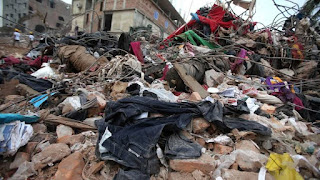What’s Wrong with Fast Fashion?
What’s Wrong with Fast Fashion?
Fast fashion has transformed the global clothing industry, making trendy and affordable apparel accessible to millions. Brands like Zara, H&M, and Shein have built their empires on rapid production cycles, ensuring consumers can buy the latest styles at a fraction of traditional prices. However, this convenience comes with significant social, environmental, and ethical costs, sparking widespread controversy.
Fast fashion refers to the rapid production of inexpensive clothing that replicates current trends. Unlike traditional fashion cycles that release collections seasonally, fast fashion brands operate on a weekly or even daily cycle. This strategy encourages overconsumption, as consumers are constantly enticed by new arrivals and low prices.
Fast fashion thrives on its ability to meet consumer demands quickly and cheaply. Key attractions include:
- The low prices make fashion accessible to people across different income levels.
- Fast fashion brands ensure consumers can wear the latest styles seen on runways or social media.
- With online shopping and rapid delivery, acquiring new clothes has never been easier.
However, beneath this appealing facade lies a host of controversies.
- Fast fashion concerns clothing items that are made cheaply to reflect the latest fashion trends.
- The fast fashion industry is associated with water pollution and consumption, microfibers pollution in the ocean, waste accumulation, chemical usage, greenhouse gas emissions, soil degradation and desertification and rainforest destruction.
- The speed of fast fashion makes it’s negative impacts worse.
- Fast fashion is also associated with modern slavery.
- Despite the negatives, there are lots of actions you can take today to live a life that does not support the fast fashion industry.
There are plenty of actions you can take to limit the negative impacts of fast fashion. The first is to stop buying fast fashion clothing! There are plenty of tips and tools you can use to help you achieve this. For example, tips include:
- Buy clothes from second-hand shops
- Buy good quality clothing from reputable brands
- Pass clothes you no longer wear onto siblings, friends or neighbours.
- Find other uses for clothes you no longer wear to get more use out of them and delay their arrival in landfill.
- Repair clothes that are damaged.
- Wash clothes only when absolutely necessary.
- Wash clothes at a low temperature to limit microplastic pollution.
Fast fashion offers affordability and accessibility but comes at a high cost to people and the planet. As consumers, businesses, and policymakers, it is crucial to prioritize sustainability and ethics over convenience and profit. By making more informed choices and supporting alternatives, we can help reshape the fashion industry into one that respects both human dignity and environmental health.



Komentar
Posting Komentar